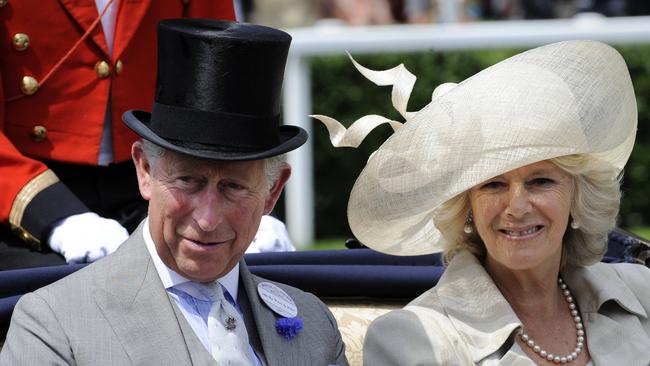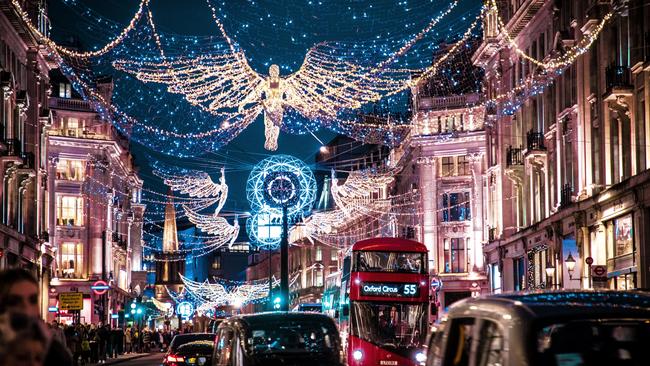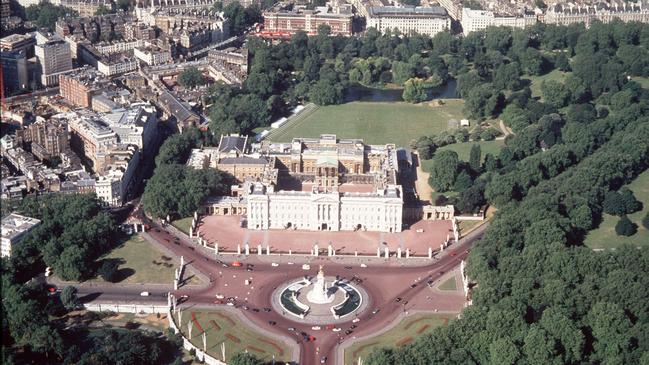King Charles inherits bulging royal purse thanks to property boom
The monarchy is spending more than in decades. A real-estate play, including some of the finest real estate in Britain, is picking up the tab.

King Charles III presides over a monarchy in robust financial health. Behind this is a booming real estate portfolio of bucolic farms, wholesale warehouses and prime London offices that has helped cover a royal spending spree.
No one outside the palace is exactly sure how rich the monarchy is, or of the personal wealth of its incumbent, Charles, who was crowned on Saturday. The institution’s income comes from a variety of sources, including taxpayers, profits from large tracts of land and undisclosed privately held investments.
One thing is certain: The British monarch’s annual income is sharply higher than it was a decade ago, bolstered in part by an asset-price boom fuelled by an era of ultralow interest rates and government stimulus. That is because the vast majority of the King’s funding comes from a share of profits in two vast portfolios of land and buildings.
Those real estate holdings were particularly sensitive to low interest rates, as a wave of global money pushed up asset values, while high-end rents surged amid a luxury boom.

Funding for the monarchy has soared at a time when Britain is mired in weak economic growth. Inflation-adjusted income for most ordinary Britons has largely stagnated over the past 15 years.
Annual payments into the monarch’s purse from those two property portfolios – one of which, the Crown Estate, is effectively managed by parliament and gives the monarchy a fixed percentage of its profits – rose 56 per cent to $200m when adjusted for inflation between 2012 and 2022, according to public records.
King Charles voluntarily pays income taxes, which are not made public, but neither of the two real estate portfolios pays corporation taxes. King Charles also pays no inheritance tax.
Both portfolios are a real estate goldmine. The Crown Estate – land owned by generations of Charles’s regal ancestors – owns more than 77,000 hectares across Britain, roughly the size of New York City.
Its holdings include the Ascot Racecourse, parts of the seabed around Britain and much of the property along Regent Street, a spine of high-end retail and offices dotted by Burberry, Coach and other luxury stores. The other holding, the Duchy of Lancaster, owns vast farmland and a full block of central London property along the River Thames.

“Prime property has performed well over the past 10 years,” said Dan Labbad, the Crown Estate’s chief executive. He credited “a combination of where markets have gone and also our interventions”, such as significant investment in upgrading retail on Regent Street.
The windfall is fortuitous as the monarchy over the past 10 years has been on a spending spree, with annual expenditure rising 79 per cent to $190m in real terms. Most of the spending has gone on long-delayed palace renovations and the hiring of dozens of additional household staff. Still, the times of plenty could be short-lived as commercial property values and rents have sunk amid higher interest rates and a gloomy economic outlook.
The British monarchy has often been dogged by the question of whether it provides value for its subjects, and must strike a balance between living in suitable pomp without appearing to drain taxpayers – especially when the tax burden is at its highest level since World War II.
A cost-benefit analysis is difficult. Its costs are opaque, with items such as the price of taxpayer-funded police protection held secret. Its benefits are also hard to quantify, but appear large, including the enormous soft power it gives the UK, the monarchy’s draw for millions of tourists, and its role as a stabilising force in society. A recent YouGov poll found 54 per cent of British people think the monarchy represents good value.
“I think the royal family is more vulnerable on finance than anything else,” said Norman Baker, a former British politician. Baker questions why, for instance, the public footed the bill for last weekend’s elaborate coronation. “If Charles wants it he can afford to pay for it,” he said, noting that no other royal family in Europe has coronations. Buckingham Palace declined to comment.
In the early 1990s, Queen Elizabeth II cut back on royal spending as a series of scandals swept over the institution, sparking greater scrutiny over how much the family cost the taxpayer. Spending more than halved up until 2012.
The family stopped using the Royal Air Force to get around, and retired the royal yacht in 1997. It also volunteered to pay income and capital gains tax on personal assets since 1992, and pays local council taxes.
King Charles has promised a slimmed-down monarchy that offers its subjects more bang for their buck, but so far there have been no notable changes, royal watchers say.

Official royal activities, security and the maintenance of six residences, including Windsor Castle and Buckingham Palace, are publicly funded. Meanwhile, residences at Balmoral and Sandringham are owned and run personally by the king. The monarch also uses his or her private wealth to fund the wider royal clan. King Charles’s eldest son, Prince William, receives profits from the Duchy of Cornwall, another large tract of land mostly in southern England, which bankrolls his immediate family.
A thousand years ago, the situation was more straightforward. In 1066, all land in England was deemed to belong to King Charles’s ancestor, King William I, “in right of the Crown” after he invaded from Normandy, France. But this was slowly whittled down as it was parcelled out to nobles over successive generations as patronage.
By the time King George III acceded to the throne in the 18th century, the size of the estate had dwindled to the point that it was producing insufficient revenue to cover the cost of paying for his household and the operating costs of civil government, which at the time came from the monarchy’s funds. So he surrendered crown land revenues to parliament in 1760 in return for an annual payment. Since that time, the monarchy played no part in managing this crown land, known as the Crown Estate, which instead is overseen by ministers accountable to parliament.
This deal, however, was sweetened in 2011 when the government agreed to give the monarch a fixed percentage of profits from the Crown Estate, rather than make annual discretionary payments. It also passed a law saying the payout could never be less than the preceding year. That guaranteed an above-inflation handout every year, said Baker.
It also came at a time when land values boomed, partly because of low interest rates engineered by central banks to prevent the fallout from the 2008 financial crisis from damaging long-term economic growth and stability.
Between 2012 and 2022, the Crown Estate’s net assets doubled to $31bn. During the same period, its profits swelled 25 per cent, when adjusted for inflation, to $585m. Parliament in 2017 temporarily increased the annual royal handout from those profits to 25 per cent from 15 per cent to help fund a renovation of Buckingham Palace. The monarch’s payment, known as the Sovereign Grant, leapt to $160m last year from $58m in 2011.
The Crown Estate’s revenues are due to be bumped up by an estimated $1.9bn a year after it leased seabed for up to six wind turbine projects. The King, who stands to potentially net an additional $470m a year from the deal, said he would waive the additional funds and instructed they be used for the wider public good.
While the money from the Crown Estate is meant to go toward official duties, the monarch has far more discretion with the funds that come from the Duchy of Lancaster.
Held in trust for the monarch since 1399, it comprises 18,000 hectares of land in England and Wales, and sends all its profits to the reigning king or queen. Once an afterthought – it delivered just $2m of profits in the early 1980s – it sent more than $40m to the monarch last year, up from $24m in 2012. It is overseen by a council and run by a set of real estate professionals. The monarch uses profits from the Duchy to pay for some of the wider family.
Its London properties were valued last year at $15bn, up from $11bn in 2012. The Duchy of Lancaster, based in an imposing building near London’s Waterloo Bridge, pays no corporation tax. The Crown Estate also owns much of the property on London’s Regent Street.
A smaller chunk of money comes from land both organisations own across the country, most of which is rented out to farmers as well as an array of colleges, pubs and a campsite where guests can fish for carp in lakes made from mineral quarries.
One driver of the Duchy of Lancaster’s growth has been its investment in warehouses around the UK. It owns a gritty industrial park in London; in northern England, warehouses are rented to beauty product distributors and logistics companies. An Aldi discount supermarket was recently built on Duchy land in the town of Crewe.

With the popularity of the monarchy stable, the tenants seem happy to pay up. Take the quaint stone-built Inn at Whitewell, a 14th-century hunting outpost in northern England that sits on land owned by the Duchy of Lancaster – meaning the rent ultimately ends up with King Charles.
“There’s a bank transfer done every quarter,” said owner Charles Bowman, whose father bought the inn from a large brewer. The Queen, then his landlord, visited for a lamb lunch around her 80th birthday.
“If you’re gonna have a landlord, you might as well have the Duchy of Lancaster,” he said.





To join the conversation, please log in. Don't have an account? Register
Join the conversation, you are commenting as Logout